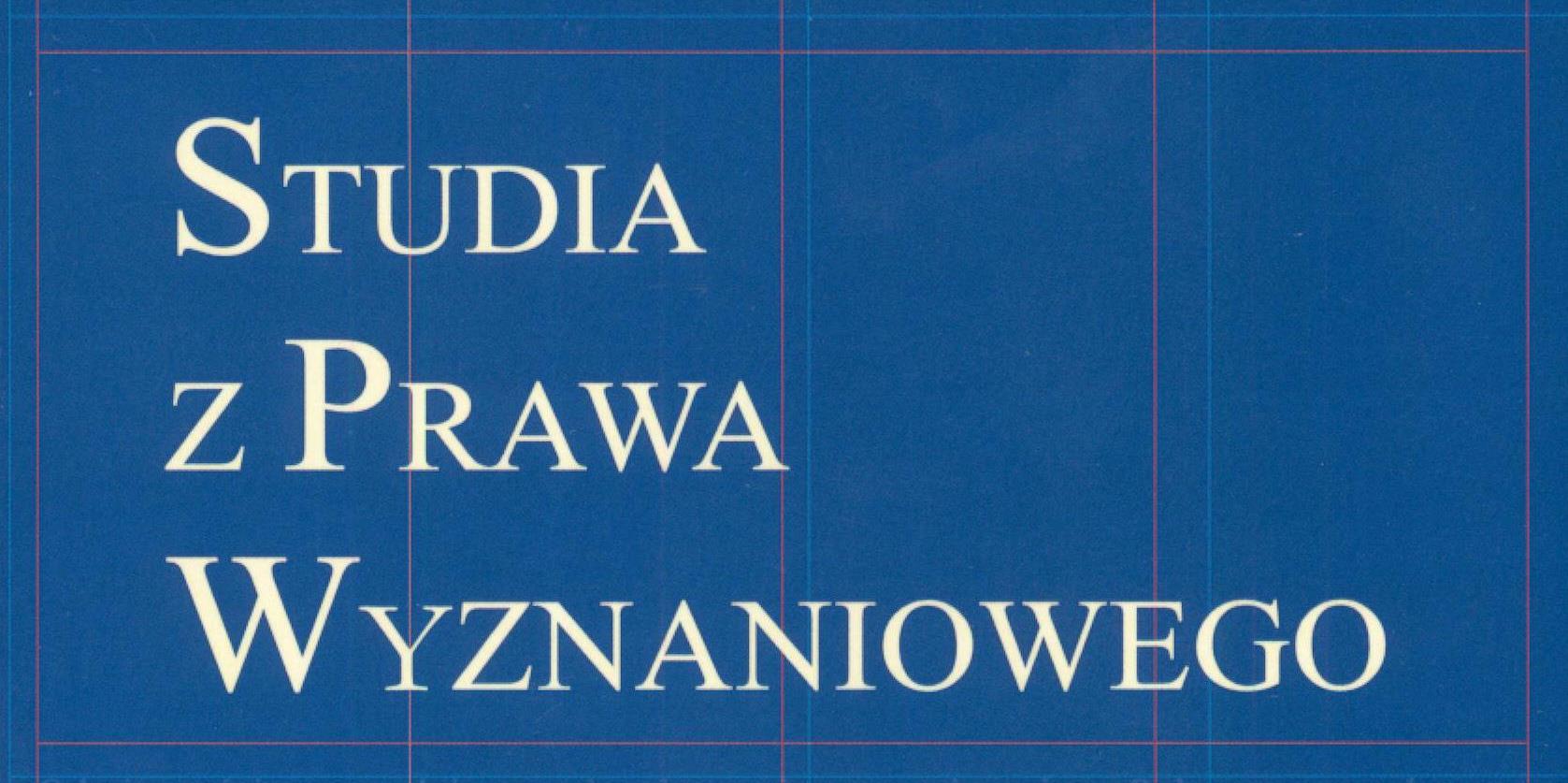Papal designations in the context of the Gregorian Reform
Abstract
This study looks at a specific aspect of papal elections during the Gregorian Reform: papal designation. In separate steps, the study endeavours to look at both the historical and developmental context of papal designation, as well as the use of papal nomination for individual elections that took place during the Gregorian Reform period. The text also uses an analysis of electoral procedures to evaluate the significance of designation, specifically its actual influence on the decisions made by electoral participants. The designation does not appear to be a procedural and legislative feature but instead more of a practical and legitimising tool for defending a chosen procedure.
Keywords:
papal designation, papal election, In nomine Domini bull, College of Cardinals, Gregorian ReformSupporting Agencies:
This publication was supported by the Cooperatio Program provided by Charles University, research area X, implemented at the Faculty of Arts of Charles University.References
Adams, J.P. 2016. Sede Vacante 1119: Falco of Benevento and the recommendation of Cardinal Conon, and then of Archbishop Guy of Vienne. California State University, Northridge [CSUN], https://www.csun.edu/~hcfll004/SV1119.html [dostęp: 3.05.2023].
Becker, Alfons. 1964. Papst Urban II. (1088–1099). Stuttgart: Hiersemann.
Cowdrey, Herbert E.J. 1983. The age of Abbot Desiderius: Montecassino, the papacy, and the Normans in eleventh an early twelfth centuries. Oxford: Clarendon Press.
Cushing, Kathleen G. 1998. Papacy and law in the Gregorian Revolution: The canonistic work of Anselm of Lucca. Oxford: Clarendon Press. DOI: https://doi.org/10.1093/acprof:oso/9780198207245.001.0001.
Dalena, Pietro. 1995. “Urbano II e Brunone di Colonia.” Rivista Storica Calabrese 16: 119–144.
D’Angelo, Edoardo. (ed.). 1998. Falconis Beneventani Chronicon Beneventanum. Firenze: Edizioni del Galluzzo.
Falque Rey, Emma (ed.). 1983. De rebus gestis D. Didaci Gelmirez, primi Compostellani Archiepiscopi (Historia Compostelana). Turnhout: Brepols.
Fliche, Augustin. 1915/1916. “L'élection dʼUrbain II.” Le Moyen Âge 28: 356–394.
Fuhrmann, Horst. 1984. Papst Urban II. und der Stand der Regularkanoniker. München: Verlag der Bayerischen Akademie der Wissenschaften.
García García, Lorena. 2014. Monasterio de San Zoilo de Carrión de los Condes: Arte e historia de un hito cluniacense. Palencia: Asociación de Amigos del Camino de Santiago de Palencia.
Goez, Werner. 1970. “Papa qui et episcopus: Zum Selbstverständnis des Reformpapsttums im 11. Jahrhundert.” Archivum Historiae Pontificiae 8: 27–59.
Hoffmann, Hartmut (ed.). 1980. Monumenta Germaniae Historica. Scriptores (in Folio), vol. 34. Hannover: Hahnsche Buchhandlung.
Holder, Karl. 1892. Die Designation der Nachfolger durch die Päpste. Freiburg: Veith.
Hüls, Rudolf. 1977. Kardinäle, Klerus und Kirchen Roms: 1049–1130. Tübingen: Niemeyer.
Jasper, Detlef. 1986. Das Papstwahldekret von 1059. Überlieferung und Textgestalt. Sigmaringen: Thorbecke.
Klewitz, Hans-Walter. 1957. Reformpapsttum und Kardinalkolleg. Darmstadt: Wissenschaftliche Buchgesellschaft.
Krause, Hans-Georg. 1960. Das Papstwahldekret von 1059 und seine Rolle im Investiturstreit. Roma: Abbazia di San Paolo.
Lühe, Wilhelm. 1898. Hugo von Die und Lyon, Legat von Gallien. Breslau: Jungfer.
Mansi, Giovanni Domenico (ed.). 1761. Stephani Baluzii Tutelensis Miscellanea: Novo ordine digesta et non paucis ineditis monumentis opportunisque animadversionibus aucta, vol. 2. Lucca: Apud Vincentium Junctinium, sumptibus Joannis Riccomini.
Mansi, Giovanni Domenico (ed.). 1775. Sacrorum conciliorum nova et amplissima collectio, vol. 20. Venezia: Antonio Zatta.
Meyer von Knonau, Gerold. 1903. Jahrbücher des Deutschen Reiches unter Heinrich IV. und Heinrich V., vol. 4: 1085 Bis 1096. Leipzig: Duncker & Humblot.
Pertz, Georg Heinrich (ed.). 1848. Monumenta Germaniae Historica. Scriptores (in Folio), vol. 8. Hannover: Hahnsche Buchhandlung.
Robinson, Ian Stuart. 1990. The Papacy 1073–1198: Continuity and innovation. Cambridge: Cambridge University Press. DOI: https://doi.org/10.1017/CBO9781139167772.
Schilling, Beate. 1998. Guido von Vienne. Papst Calixt II. Hannover: Hahnsche Buchhandlung.
Schludi, Ulrich. 2014. Die Entstehung des Kardinalkollegiums: Funktion, Selbstverständnis, Entwicklungsstufen. Ostfildern: Thorbecke.
Suchánek, Drahomír. 2012. “Historical and legal milestones of medieval papal elections.” West Bohemian Historical Review 2(1): 27–40.
Suchánek, Drahomír. 2022. In nomine Domini. Papežské volby v období gregoriánské reformy. Praha: Karolinum.
Thaner, Friedrich (ed.). 1965. Anselm II. Bischof von Lucca. Collectio canonum una cum collectione minore. Aalen: Scientia Verlag.
Violante, Cinzio. 1961. “Anselmo da Baggio.” In: Dizionario Biografico degli Italiani, vol. 3, ed. Alberto Maria Ghisalberti, 399–407. Roma: Istituto della Enciclopedia Italiana.
Waitz, Georg (ed.). 1844. Monumenta Germaniae Historica. Scriptores (in Folio), vol. 6. Hannover: Hahnsche Buchhandlung.
Charles University in Prague
PhD, ThD, Associate Professor, Institute of World History, Faculty of Arts, Charles University in Prague, Nám. Jana Palacha 2, CZ 116 38 Praha 1, Czech Republic
https://orcid.org/0000-0001-6417-1755License

This work is licensed under a Creative Commons Attribution 4.0 International License.
- According to the Act of 4 February 1994 on copyright and related rights, the author of a publication transfers to the publisher the proprietary copyright of his or her work in all fields of exploitation known on the date of concluding an agreement with the publisher.
- Texts submitted for publication in Studia z Prawa Wyznaniowegocannot infringe the copyright of third parties. The author declares the originality of his or her publication when completing a declaration and signing a publishing agreement.
- Authors are permitted to post the publisher's version of their work online (e.g. in institutional repositories, academia.edu, researchgate.net or on their website) after its initial publication in this journal.
- With the consent of the editors, texts published in Studia z Prawa Wyznaniowego can be republished in other publications (provided that their original place of publication is acknowledged).
- This is an open access journal which means that all content is freely available without charge to the user or his/her institution. Users are allowed to read, download, copy, distribute, print, search, or link to the full texts of the articles, or use them for any other lawful purpose, without asking prior permission from the publisher or the author.











